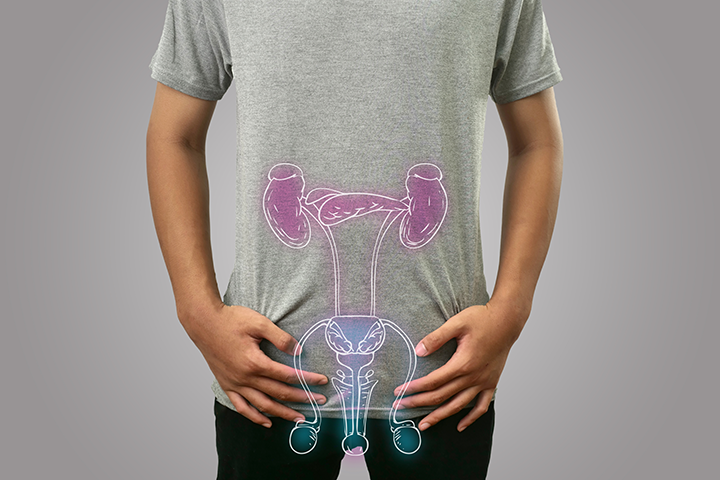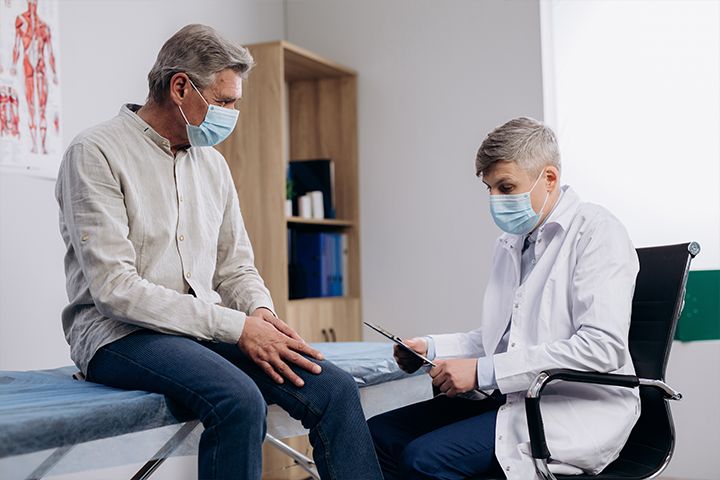There’s a lot of information out there about prostate and testicular cancer. It’s easy to think you’re invincible. There’s no way cancer can happen to you, right? Unfortunately, it can.
Some Common Myths About Cancer Are:
You won’t get cancer if it doesn’t run in your family. A family history of any type of cancer is an important thing to share with your provider, but many men who have cancer have no family history.
It’s always a lump you can feel. Cancer doesn’t always present as a lump, especially if it’s early stage.
You don’t need to worry about cancer if you maintain a healthy lifestyle. While maintaining a healthy weight, eating well, exercising, and limiting tobacco and alcohol use can lower your risk, there’s no guarantee you won’t develop cancer.
You only need to be screened for cancer if you have symptoms. Often, early-stage cancer is diagnosed when you’re feeling fine. Since it’s common to not have any symptoms, it’s important to keep up with your recommended screenings, even if you feel great.

Prostate Cancer
Prostate cancer is the most common non-skin cancer in American men. It often has no symptoms, especially in an early stage. When there are symptoms, they can include:
trouble starting or stopping the flow of urine
passing urine more often during the day or getting up many times during the night to pass urine
frequent, urgent need to pass urine, even when there is only a small amount
less urine flow
burning when you pass urine
chills and high fever
low back pain or body aches
pain low in the belly, groin or behind the scrotum
sexual problems and loss of sex drive
Tell your doctor if you have these symptoms. Keep in mind that men can have prostate changes that cause symptoms like these but aren’t because of cancer. For example, as you age, the prostate tends to grow and can decrease urine flow.
You should start getting screened at age 50, even if you don’t have any signs or symptoms. Your provider may recommend getting screened earlier if you’re African American or have a family history of prostate cancer.
Getting Screened
The most common screening test for prostate cancer is the prostate-specific antigen (PSA) blood test. PSA is made by both normal and cancer cells in the prostate gland. A higher level of PSA may indicate that cancer is present.
Your provider can also perform a digital rectal exam (DRE) to screen for prostate cancer. During a DRE, your provider will insert a gloved finger into your rectum to feel for abnormalities in the prostate.

Testicular Cancer
Testicular cancer isn’t as common as prostate cancer. It’s found most frequently between the ages of 15 and 45 and is highly treatable. The most common sign is a painless lump in your testicle, but it can also cause:
swelling or a buildup of fluid in your scrotum or testicles
heaviness or “full” feeling in the scrotum
mild ache in your lower abdomen or groin
pain or discomfort in your scrotum, testicle or lower back
There’s no recommended screening schedule for testicular cancer. Regular testicular self-examinations can help identify growths early when the chance for successful treatment of testicular cancer is highest.
A testicular self-exam is best performed after a warm shower because heat relaxes the scrotum, making it easier to spot anything abnormal. Follow these steps every month:
Stand in front of a mirror. Check for any swelling on the scrotum skin.
Examine each testicle with both hands. Place the index and middle fingers under the testicle with the thumbs placed on top. Roll the testicle gently between the thumbs and fingers. Don't be alarmed if one testicle seems slightly larger than the other. That's normal.
Find the epididymis, the soft, tubelike structure behind the testicle that collects and carries sperm. If you are familiar with this structure, you won't mistake it for a suspicious lump. Cancerous lumps usually are found on the sides of the testicle but can also show up on the front.
If you find a lump, see your Primary Care Provider. Only a doctor can make a positive diagnosis. Common procedures to diagnose testicular cancer are:
physical exam
blood work
ultrasound
biopsy
Lowering Your Risk
Most risk factors for prostate and testicular cancer, like age, family history and ethnicity, can’t be changed. However, these healthy lifestyle choices may help lower your risk:
Keep a healthy weight.
Eat healthy foods like fruits, vegetables and whole grains. Limit dairy, red and processed meat, sugary drinks, and highly processed foods.
Get regular physical activity.
Avoid tobacco and alcohol.
Provider Finder®
Our Provider Finder offers an easy way to find a doctor, hospital or other type of medical care. You can search by location, gender or specialty. You can also research providers using patient reviews, certifications and recognition information.
The Fitness Program
Your health plan gives you so much more than coverage for doctors’ visits. It includes a variety of programs to help you take a well-rounded approach to your health and wellness at little to no extra cost.
Sign up for the Fitness Program to get affordable, no-contract memberships at gyms nationwide.
Well onTarget®
Start working with a wellness coach through Well onTarget® and sign up for self-guided digital courses on managing stress, improving your fitness level and dietary habits, losing or maintaining weight and improving cholesterol and blood pressure.